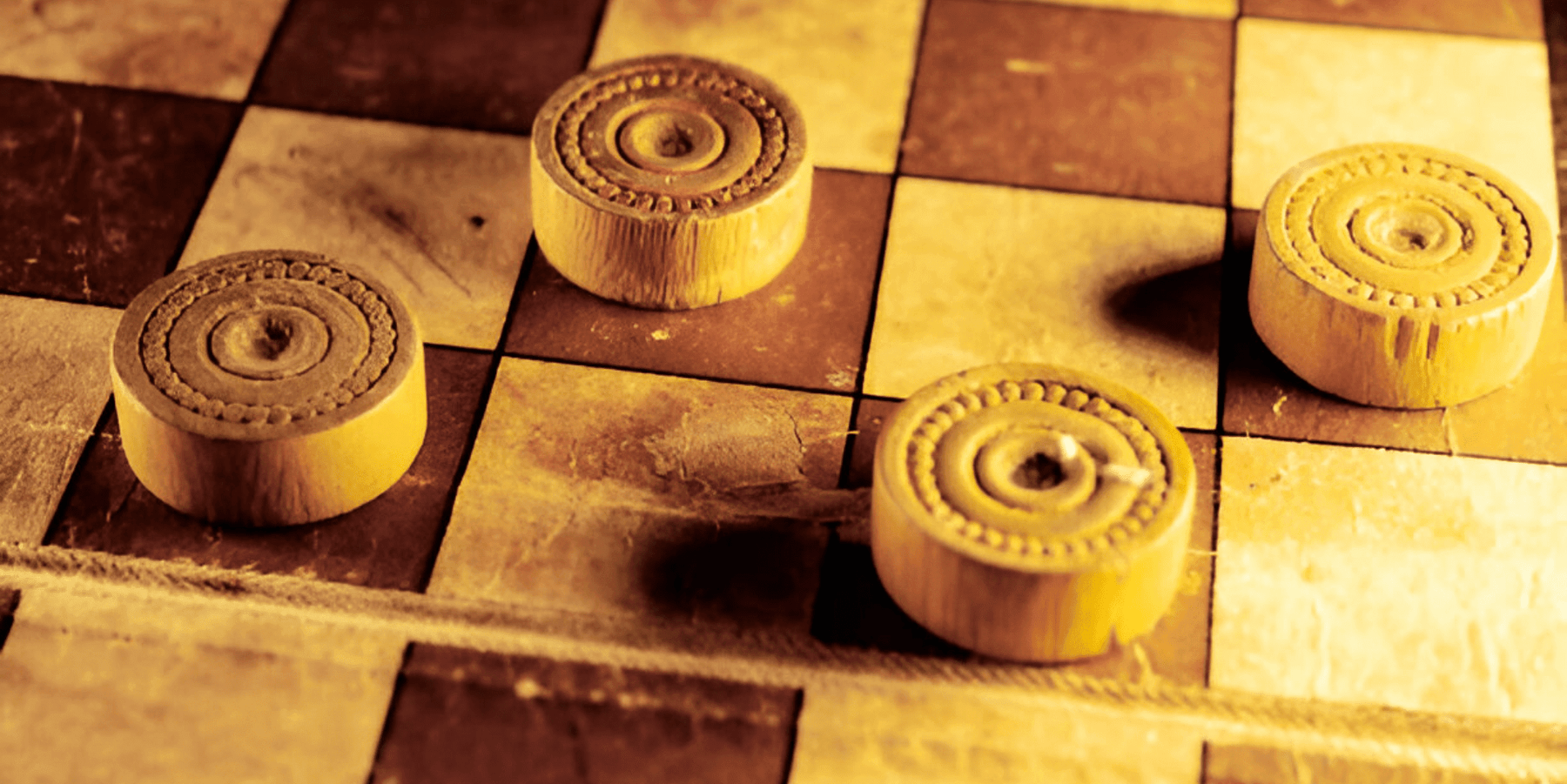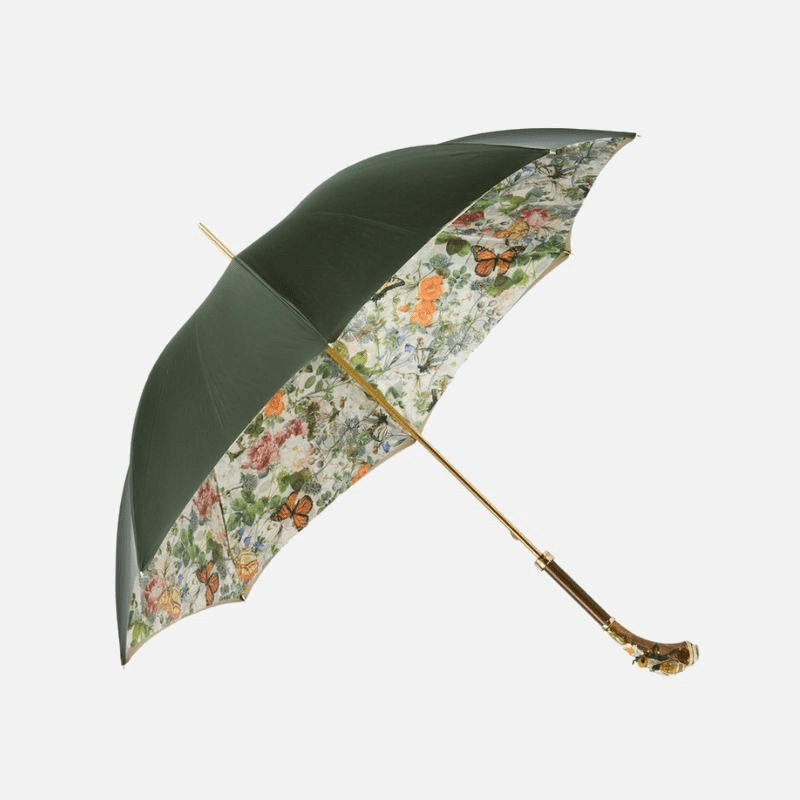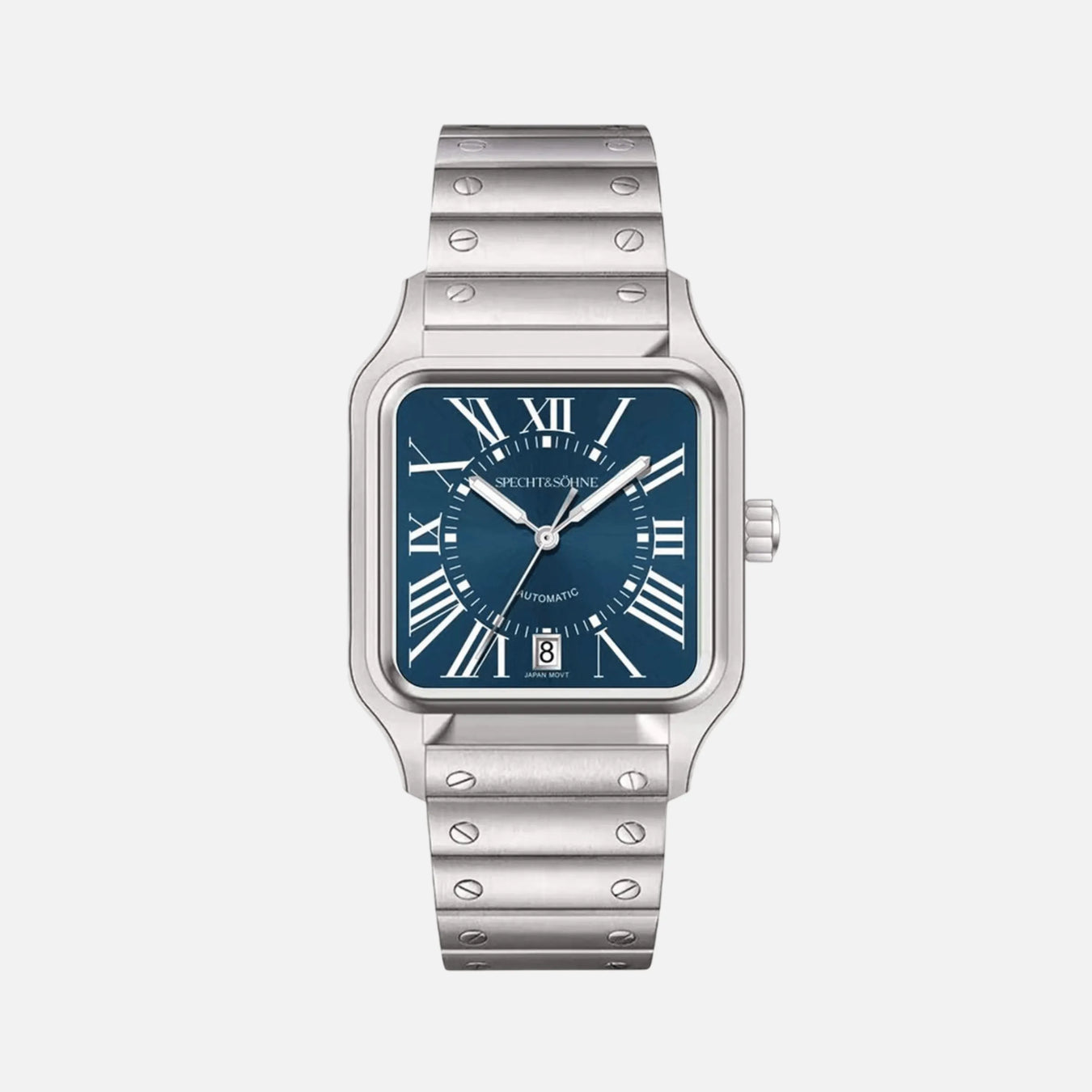
A Journey Through Time: Exploring the Fascinating History of Chess and Backgammon
Introduction to Chess and Backgammon: Unveiling the Grandmasters of Board Games

Chess and backgammon stand as monumental pillars in the pantheon of strategic board games, each boasting a lineage rich with cultural significance and intellectual prowess. Traversing across centuries, nations, and civilizations, these games have evolved not just as pastimes but as refined art forms.
In the realm of chess, which symbolizes the ultimate battle of wits, there exists a set of wooden chess pieces known as Art 809125. Skilled artisans spend countless hours crafting these pieces, ensuring each is a testament to the game’s enduring legacy. A match with such a set elevates the experience, transcending the ordinary into a realm of tactile luxury and visual splendor akin to a duke’s parlor.
For those seeking grandeur, a set of large wooden chess pieces beckon. These luxury chess pieces are not merely game components; they are a masterpiece, a centerpiece adorning the game’s theater of war. Serving as a beautiful chess set, it becomes a treasured gift for a dad who appreciates the finer nuances of craftsmanship and strategy. Each piece whispers tales of power struggles mimicked across the checkered battlefield.
Concurrently, backgammon holds its own as a venerable contest of strategy and luck. The game is ancient, yet perpetually fresh—a handmade, made-to-order marvel, showcasing intricate marquetry on each board, inviting players to a duel of fate and calculated risk.
As grandmasters of board games, chess and backgammon invoke questions as rich as their history. FAQs often delve into the origins and evolution of these timeless strategies while also touching upon the meticulous art of crafting the games themselves.
Herein lies the grandeur of chess and backgammon—a confluence of history, artistry, and cerebral competition. They don’t just challenge the mind; they captivate the soul.
Origins and Ancient Beginnings: Tracing the Roots of Chess
The chronicles of chess reveal its genesis in the strategic minds of ancient civilizations. It is widely accepted that the precursor to modern chess emerged in India during the Gupta Empire, around the 6th century AD, under the moniker ‘Chaturanga’. This early variant of chess was a strategic, two-player war game representing four divisions of the army—infantry, cavalry, elephantry, and chariotry—each symbolized by pieces analogous to the pawns, knights, bishops, and rooks of contemporary chess.
From India, the fascination with this tactical board game spread swiftly to Persia, where it was known as ‘Shatranj’. The Persians introduced key modifications to the rules and instigated the crafting of exquisitely handmade sets, reflecting a burgeoning artistic culture intertwined with intellectual pursuits. The Islamic conquest of Persia saw chess travel across the Muslim world and into Moorish Spain, reaching European shores by the 10th century.
As the game’s popularity soared in Europe, further adaptations were made. The names and movements of pieces evolved to mirror the social and military hierarchy of the medieval period. By the 15th century, the queen and bishop acquired the powerful moves they employ today, bringing chess closer to its current form.
Today, enthusiasts can marvel at the rich history embodied within a set of wooden chess pieces art 809125 or indulge in a game with a set of large wooden chess pieces. Luxury chess pieces not only serve as implements of the game but also as heirlooms and tokens of cultural heritage, making them an extraordinary gift for dad or any loved one.
In the realm of custom chess sets, made-to-order pieces allow connoisseurs to capture the grandeur of chess’s illustrious past. Each beautiful chess piece carries echoes of historical stratagems and royal intrigue, continuing to enthrall players just as it did centuries ago.
Chess, indeed, remains an illustrious testament to human ingenuity—a game that has brilliantly withstood the test of time and continues to be celebrated worldwide.
From Persia to the World Stage: The Evolution of Chess
Chess, a game that has captured the imagination and strategic thinking of millions, traces its lineage back to Persia, known as the game of “chaturanga.” Its journey from the royal courts of Persia to every corner of the globe is as storied as the game is intricate. The evolution of chess is not just about how the game spread geographically but also how it transformed culturally and materially, leading to the stunning range of chess sets available today.
In its nascent form, the pieces of chess were not the ornate, beautiful chess pieces familiar to players now. They were rather simplistic, function preceding form. As the game meandered through the medieval Islamic world, it became a popular pastime, with each region putting its own spin on the pieces. This period saw the emergence of crafting techniques which would later allow for the creation of handmade chess sets, an art that still thrives.
The journey westward through trade routes introduced chess to Europe by the 10th century, where the game underwent further changes. The chess pieces assumed identities from the feudal system, becoming the kings, queens, bishops, and knights known today. The Renaissance saw a flowering of craftsmanship, with artisans fashioning made-to-order and luxury chess pieces that were as much a status symbol as they were gaming tools.
The 19th century saw standardized chess pieces, best epitomized by the Staunton set, which made chess a truly global and competitive sport. Today, a set of large wooden chess pieces reflects both the game’s regal heritage and its accessibility. A set of wooden chess pieces, art 809125, epitomizes this, being as much a collector’s item as a functional gaming set—a perfect gift for dad, historian, or the chess enthusiast.
Through its evolution, chess has remained a game that is both cerebral and beautiful, its pieces a testament to history’s march and creativity’s boundless potential.
Cultural Impact and Historical Significance of Chess Through the Ages

Throughout history, chess has permeated cultures and societal structures, earning it the reputation of a cerebral and strategic pastime transcending language and borders. From its conception, believed to be in India during the 6th century, chess spread across Persia, was modified in the Islamic world, and eventually took root in Europe.
The game’s cultural impact is palpable in how it reflects societal shifts. Chess pieces and their movements often paralleled social hierarchies and war strategies, serving as a microcosm of medieval power dynamics. Kings and queens, bishops, knights, and rooks—each piece’s role on the board offered a glimpse into their real-world counterparts’ influence.
Chess’s historical significance is also evident in the literature and art it has inspired. Through the Renaissance and beyond, chess has been alluded to in works of Shakespeare and painted by renowned artists, symbolizing strategy, human intellect, and the complexities of life. It also served as a diplomatic tool, bridging gaps between conflicting leaders who found common ground over the chessboard.
Additionally, the creation of unique, often handmade or made-to-order chess sets has developed into a respected craft. A set of wooden chess pieces, especially ones such as art 809125 or a set of large wooden chess pieces, is not only a game but an embodiment of luxury and artistry. These beautiful chess pieces are frequently sought after as collector’s items or as a poignant gift for dad on special occasions.
Chess’s imprint on culture and history is undeniable. From being a mere pastime, it has become a symbol of intelligence, an archive of societal roles, and a celebrated art form. Its reach is so extensive that frequently asked questions (FAQ) sections are dedicated to unraveling its complexities and preserving its heritage for future generations.
The Dawn of Strategy: Early Evidence of Backgammon in History

Stepping back into the annals of civilization, it quickly becomes evident that the tactical prowess displayed in backgammon today is steeped in a deep historical lineage. The game, much like chess, has ancient roots that trace back thousands of years, pointing to the abiding human fascination with strategy and chance. Archeologists have unveiled artifacts resembling backgammon equipment in numerous sites across the Middle East. One of the earliest precursors to the modern game was discovered in the ruins of Shahr-e Sukhteh, Iran, dating back to around 3000 BCE.
This ancient iteration comprised a board, dice, and playing pieces that signaled a rudimentary form of the game. Not much later, in Mesopotamia, the Royal Game of Ur captured the imaginations and competitive spirits of its inhabitants. Boards hewn from wood and embellished with shells and precious stones revealed the status of the game as a pastime for nobility. This game, considered a close relative to backgammon, also included elements of chance and strategy.
Astoundingly, backgammon’s continuity throughout history is further cemented by references in ancient literature and codified laws. The Roman Empire saw the game’s popularity surge under the banner of ‘tabula,’ a term denoting a range of board games. The fascination with this game reached such heights that Emperor Claudius is reputed to have penned an entire book on the subject.
The evolution of backgammon over millennia into the version beloved today is itself a testament to handmade craftsmanship and cultural exchange. Diverse civilizations have contributed to the game’s design and rules, leading to a set of wooden backgammon pieces that embrace both art and history. The game’s persistent allure, much like the appeal of a set of large wooden chess pieces or luxury chess pieces, underlines the timeless desire for objects that celebrate skill, intelligence, and the human touch. Thus, backgammon offers not merely an avenue for entertainment but also a beautiful, collectible gift that resonates with the richness of history.
Backgammon Through the Millennia: Adaptation and Spread Across Civilizations

Ancient backgammon, originating over 5,000 years ago, has a storied journey through human history, showcasing its remarkable ability to adapt and spread across various cultures. From the Royal Game of Ur in Mesopotamia to the Roman ludus duodecim scriptorum, backgammon evolved with each civilization it touched.
Civilizations from Persia to Byzantium modulated the game to suit their leisurely needs, and through medieval Europe, the game morphed yet again. By the 17th century, backgammon had acquired a set of rules recognizable in today’s play. With such adaptability, it is little wonder the game has endured the test of time on its trek across the globe.
The transmission of backgammon was not merely incidental. Travelers, merchants, and soldiers carried the game with them, making it a staple in cafes and homes alike. Each region left its imprint, crafting sets from local materials, resulting in a rich diversity of handmade boards and pieces.
Throughout its journey, the notion of luxury became intertwined with backgammon. Individually crafted, made-to-order sets became signs of status. The Middle East, renowned for its artisans, created intricate designs with inlaid mother-of-pearl and hardwoods. Meanwhile, European nobility favored lavish materials like ivory.
Backgammon’s community thrives today, merging the classic with the contemporary. Enthusiasts might seek a set of large wooden chess pieces, while others prefer a set of wooden chess pieces art 809125 for its craftsmanship. For many, a luxurious set of beautiful chess pieces doubles as an exquisite gift for dad or a cherished heirloom.
Interest in backgammon remains resilient. Modern tournaments and online platforms bolster its standing, ensuring the ancient game’s relevance well into the future. In countless languages, the clatter of dice and the strategic movement of checkers continue to echo the legacy of civilizations before, a testament to the game’s enduring allure.
Game Mechanics Decoded: Understanding Chess and Backgammon Gameplay

Chess and backgammon, both timeless board games, offer complex gameplay fueled by intricate mechanics. In chess, a player’s strategic prowess is constantly tested with each move of their handmade pieces on the 64-square board. A well-curated set, like the “a set of wooden chess pieces art 809125” or “a set of large wooden chess pieces,” becomes a legacy, often passed down as a treasured “gift for dad” or heirloom. The objective is to checkmate the opponent’s king, which requires foresight and the ability to predict the opponent’s strategy.
The luxury chess pieces, beautifully crafted, represent different roles and movements. Pawns, the foot soldiers, move forward but capture diagonally. Rooks traverse straight lines across the board, while knights make an L-shaped move. Bishops glide diagonally, and the queen, the most powerful piece, combines the moves of the rook and bishop. The king, though limited in mobility, is the fulcrum of the game; its safety is paramount.
In contrast, backgammon is a race combined with a battle wherein two players move their pieces according to dice rolls on a board featuring 24 narrow triangles known as points. The game’s objective is to bear off all one’s pieces before the opponent. Despite the element of chance introduced by the dice, successful players mitigate randomness with skillful strategic planning.
Regarding frequently asked questions (FAQ), these are pertinent:
- How are the chess pieces made?
- What’s the best strategy in backgammon if one rolls a double?
This reflects both games’ attention to detail and complexity, requiring a blend of tactical knowledge and the ability to capitalize on unforeseen opportunities. The result is an elegant collision of strategy, probability, and skill encapsulated within the timeless gameplay of chess and backgammon.
Legendary Matches and Grandmasters: Iconic Moments in Chess History
Chess history has been graced with legendary grandmasters and unforgettable matches that have enthralled enthusiasts for generations. The handmade precision that goes into crafting a set of large wooden chess pieces reflects the meticulous attention to detail grandmasters apply in every game. A luxury chess piece becomes a cherished beautiful chess piece, much like the games that enter the annals of chess lore—gifts for dad, son, or any chess aficionado reliving these iconic moments.
In 1972, the world watched as Bobby Fischer challenged Boris Spassky, the reigning world champion, in a match emblematic of the Cold War tensions of the time. Fischer’s victory not only captured the World Championship but also reignited interest in chess across the United States.
Another historic face-off took place in 1984-85 between Anatoly Karpov and Garry Kasparov. They battled over five months across 48 games, a duel that ended without a victor due to concerns over the players’ health. Kasparov later defeated Karpov to become the youngest-ever undisputed World Chess Champion.
Magnus Carlsen’s meteoric rise at the turn of the century heralded a new era in the chess world. Carlsen’s style, marked by deep strategic understanding and impeccable endgame prowess, has been equated to playing against a high-level algorithm.
The 1997 showdown between Kasparov and Deep Blue, an IBM supercomputer, represented a seminal moment in the history of the game, as man versus machine battles took center stage. Kasparov lost the rematch, showcasing the advancement of artificial intelligence.
Each epic contest and legendary grandmaster contribute to the rich tapestry of chess history, inspiring every carefully made-to-order set that conveys respect for the game’s deep strategic complexity.
Backgammon’s Renaissance: Notable Revivals and Modern Play

The recent resurgence of backgammon attests to its undying charm and intellectual appeal. This classic game, with roots tracing back millennia, has experienced a remarkable renaissance in both casual and strategic spheres. One catalyst for this revival is the crafting of bespoke, handmade game sets that embody luxury and a personal touch. Connoisseurs of game board artistry hold in high esteem items such as a set of wooden chess pieces art 809125, not only for their functional purpose but also as a cultural statement.
Today’s artisans offer made-to-order backgammon sets that captivate players with their aesthetic grandeur, becoming a focal point of rooms and a tribute to the game’s storied heritage. These sets, often paired with a set of large wooden chess pieces, redefine opulence in gaming. Luxury chess pieces become heirlooms, reflecting the game’s prestige and the owner’s taste.
The rebirth of backgammon has ushered in a new audience, lured by the allure of beautiful chess pieces and the promise of a strategic challenge, proving to be an excellent gift for dad or any enthusiast. It is not merely the acquisition of a game set; it’s the cultivation of a pastime that bridges generations and geographical divides.
Digital platforms have also played a significant role in modern play, permitting backgammon aficionados to connect and compete globally. This cyber-revival has been facilitated by frequently asked questions (FAQ) resources, tutorials, and online communities, paving the path for newcomers and providing a medium for seasoned players to showcase their proficiency.
Ultimately, backgammon’s renaissance is a testament to its timeless nature, adaptive to the ebb and flow of cultural interests. It thrives in the synthesis of antiquity and modernity—each roll of the dice an echo from the past, cast into the future.
Intellectual Legacy: The Role of Chess and Backgammon in Cognitive Skills Development

Chess and backgammon have more to offer than mere entertainment. These games are not only intricately linked with history but also with the enhancement of cognitive abilities. The role they play in the development of strategic thinking, problem-solving, and other intellectual skills is profound.
Chess: A Mental Gymnastic
Chess is a superb workout for the brain, testing and improving a player’s analytical skills and foresight. Engaging in chess can lead to:
- Improved Memory: Regular players often remember vast numbers of chess positions and openings, which translates into better memory skills.
- Enhanced Problem-Solving Abilities: Chess necessitates the anticipation of an opponent’s moves, offering a complex problem-solving exercise.
- Higher Order Thinking Skills: Deciding on a strategy involves evaluation, critical thinking, and synthesis, all higher-order cognitive functions.
Embellished with beautiful chess pieces, such as those found in “a set of wooden chess pieces art 809125” or “a set of large wooden chess pieces,” one not only owns a handmade decorative item but also a potential catalyst for intellectual growth.
Backgammon: The Antiquity of Calculated Risk
Backgammon, meanwhile, imparts the skill of risk assessment:
- Probability Comprehension: The dice component introduces the concept of chance, enhancing one’s ability to calculate and respond to varying probabilities.
- Strategic Flexibility: The need to adapt quickly to the roll of the dice or an opponent’s play nurtures agile strategic thinking.
Introducing children and adults to these games can have a beneficial effect on their cognitive skill set. Whether opting for luxury chess pieces or a more modest board, the impact on the player’s mind is undeniable. As unique gifts for dad or a thoughtful present, these timeless games continue to contribute to the intellectual legacy of those who engage in them.
Frequently asked questions about these games often revolve around their cognitive benefits, indicating an awareness of their role in mental fortification. As players of all ages continue to deploy their knights and roll their dice, they are unknowingly participating in an ancient tradition of mental enhancement.
Artistic Expressions: Chess and Backgammon in Literature, Art, and Film
Chess and backgammon are not merely games of skill and strategy, but as cultural artifacts, they have permeated the artistic arenas of literature, art, and film, conveying complex symbolism and narrative depth.
In literature, chess has often been employed as a metaphor for strategic contemplation and the duality of human nature, as exemplified in Lewis Carroll’s ‘Through the Looking-Glass,’ wherein chess pieces become characters on a fantastical board of life’s game. Conversely, backgammon has surfaced in literary works representing fate’s capricious nature and the interplay between chance and skill, a notable instance being the inclusion of a backgammon game in James Joyce’s ‘Ulysses,’ which elucidates themes of rivalry and fortune.
Artistic representations have captured the essence of these games with intricate detail and symbolic profundity. A set of wooden chess pieces, art 809125, for instance, is not a mere collection; it is a handmade testament to craftsmanship that can transcend time, mirroring historical and social narratives. Equal in grandeur, a set of large wooden chess pieces or luxury chess pieces often appears in opulent artistic renderings, denoting status and intellect, with such beautiful chess pieces becoming a coveted gift for dad or any aficionado.
The silver screen has not neglected the rich thematic potential of chess and backgammon. Films such as ‘The Seventh Seal’ by Ingmar Bergman use chess as a powerful allegory for life-and-death gambits, while ‘Octopussy’ indulges in the glamour of backgammon, suggesting the game’s alliance with espionage and risk-taking.
As these cultural mediums continue to interpret the games of chess and backgammon, the narrative of handmade, made-to-order chess sets becomes intertwined with the enduring allure and dramatic intricacies that these games symbolize. Whether as a literary device, an artistic obsession, or a cinematic motif, chess and backgammon remain steadfast in their influence on artistic expressions.
The Digital Transformation: Online Platforms and AI in Chess and Backgammon

In the realm of gaming, the digital transformation has ushered chess and backgammon into a new era. Online platforms and artificial intelligence (AI) have revolutionized the way enthusiasts engage with these timeless board games. Technology has enabled players to shift from handmade sets to virtual boards, transforming every encounter into a globally connected experience.
Online platforms now offer access to chess and backgammon 24⁄7, allowing for seamless play against opponents from around the world. These sites cater to various skill levels, ensuring that novices and grandmasters alike can find suitable matches. Moreover, the rise of made-to-order digital experiences has personalized the way individuals learn and play. For instance, AI-driven analytics provide players with feedback, identifying strengths to leverage and weaknesses to address.
AI’s influence extends to the creation of advanced opponents capable of challenging even the most proficient players. This technology has made notable strides, not just in gameplay, but also in strategic development, where AI algorithms dissect millions of past games to inform future tactics. In chess, the impact of AI outshone expectations when, in 1997, IBM’s Deep Blue defeated the reigning world champion.
Beyond competition, AI and online platforms have become instrumental in chess and backgammon education. Interactive tutorials, advanced problem-solving exercises, and the ability to replay key historical matches enhance the learning curve for players. The collective wisdom of countless games is now at the fingertips of any aspiring gamer.
Digital tools also enable the creation and distribution of a set of wooden chess pieces art 809125. These luxury chess pieces are more than a game; they’re seen as collectibles – beautiful chess pieces that double as a gift for dad or any aficionado. While traditionalists may crave the tactile sensation of a set of large wooden chess pieces, the online realm acknowledges this by offering virtual equivalents that echo the beauty and craftsmanship of their real-world counterparts.
FAQ sections on online gaming platforms provide users with the information needed to navigate these digital spaces confidently. The integration of AI and online access has certainly changed how chess and backgammon are perceived and played, heralding a future where every move, whether made on a handcrafted board or a pixelated screen, is part of the extensive tapestry woven by these ancient games.
Preserving Tradition vs. Embracing Change: The Future of Chess and Backgammon

In the face of an evolving world, the classic games of chess and backgammon stand at a crossroads. These ancient games have been etched into history, not only by the strategies and intellects they have shaped but also through the tangible, timeless artisanship seen in sets like the handmade a set of wooden chess pieces art 809125 or the exquisite a set of large wooden chess pieces luxury chess pieces. Such craftsmanship is not merely for play; it is a nod to the generations of tradition, a beautiful chess pieces gift for dad, or a cherished heirloom to be passed down.
Yet, the need to adapt and keep pace with modernity has chess and backgammon communities pondering their direction. Digital platforms offer a world where these games can flourish in new, accessible ways, connecting players across the globe and providing an innovative avenue for competition and learning. Such platforms can accommodate FAQs, offering instantaneous help and guidance to both rookies and seasoned players.
Despite this, the allure of physical boards remains. The tactile sensation of moving a piece across a board, the clack of backgammon stones, and the weight of luxury chess pieces are experiences digital versions cannot capture. For some enthusiasts, the future lies in made to order sets, tailor-made to reflect personal styles and contemporary design while honoring the craftsmanship of the past.
In this era, the balance lies in preserving the heritage and essence of chess and backgammon while embracing technology that makes learning and playing more inclusive and widespread. As communities navigate this balance, the core challenge will be to ensure that any evolution remains respectful of their rich and intricate histories.
Conclusion: The Timeless Fascination with Chess and Backgammon

Chess and backgammon, with their origins steeped in the annals of history, continue to capture the imagination of people around the world. Whether it is the meticulous craftsmanship of a set of wooden chess pieces, each carved with precision, or the allure of beautiful chess pieces whose elegance enhances the cerebral duel, enthusiasts and collectors alike cherish these games.
In an age dominated by digital entertainment, these board games stand as a testament to the enduring appeal of tactical skill and strategy. The made-to-order aspect of luxury chess sets, including items such as Art 809125, adds a personal touch, transforming a mere game into a treasured heirloom. These are not just games, but also objets d’art that signify status and sophistication—making them an ideal gift for dad or any discerning aficionado.
The intricate backgammon boards and the large wooden chess pieces resonate with history and artisanship. These games are engraved in cultural consciousness, often imparting valuable lessons in patience, foresight, and competition. The frequently asked questions (FAQ) sections of manufacturers and retailers are a testament to the unquenched curiosity and passion that these games incite.
Moreover, the handmade nature of many chess and backgammon sets marks a tradition of quality and authenticity. Each move on the board is a reminder of the blend between human creativity and the timeless essence of the games.
The timeless fascination with chess and backgammon is not merely about the games themselves but the confluence of art, intellect, and heritage that they represent. Their history narrates a human experience that transcends the confines of time, making both chess and backgammon infinitely more than just pastimes; they are treasures of human civilization.






